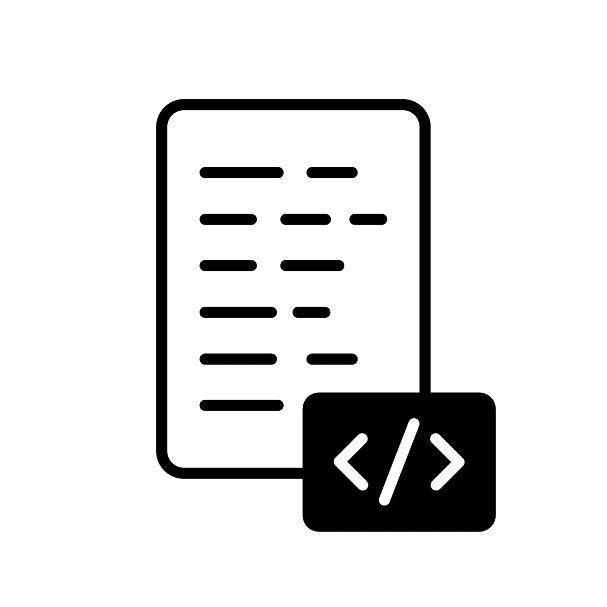Utilize sensors, circuits, and coding to construct your own fundamental robots.

Our teachers and tutors graduated from top universities








Overview

Customised coding curriculum
Select your preferred coding languages or topics, and we'll connect you with an expert tutor who will ensure you're well-versed.

Test taking strategies
Get diagnosed about your weaknesses and strengths, and learn how to optimize your performance.

Private lesson
No need to accommodate other students. Learning is customised your perfect pace and difficulty so you are always improving.
About Arduino
Arduino transcends its hardware origins; it’s an ecosystem that bridges the realms of the physical and digital. Its user-friendly software interface, combined with an extensive selection of hardware options, ensures accessibility for users of all proficiencies. Arduino boards are equipped with sets of both digital and analog input/output pins, facilitating connections with an array of sensors, displays, motors, and various other devices.
The open-source nature of Arduino promotes collaboration, with a wealth of libraries and sketches readily available. This accessibility allows users to build upon existing work, accelerating their own projects. Regardless of your interests – be it robotics, home automation, IoT, or interactive art installations – Arduino offers the adaptability to transform your ideas into reality.
By joining the vibrant Arduino community, you’ll engage in knowledge-sharing, learn from peers, and even contribute to the platform’s advancement. This collaborative atmosphere fosters rapid learning and innovation, positioning Arduino as an ideal tool for prototyping, experimentation, and addressing real-world challenges.
Moreover, Arduino is a powerful educational tool, widely employed in schools, universities, and workshops. Its simplicity serves as an excellent entry point for newcomers to electronics and programming. Educators value Arduino for its hands-on approach, turning abstract engineering concepts into tangible, interactive experiments. From emulating a basic traffic light system to crafting a fully operational weather station, the possibilities are both endless and educational.
Arduino’s versatility extends to compatibility with a wide range of environments, including Windows, macOS, and Linux. This cross-platform support ensures that technology limitations won’t hinder your Arduino endeavors, offering a level of flexibility uncommon in more specialized systems.
In terms of long-term advantages, mastering Arduino serves as a stepping stone to advanced electronics and programming pursuits. The skills cultivated in problem-solving, logical reasoning, and software-hardware integration smoothly translate to more intricate systems and technologies. Whether you aspire to become a professional engineer, an innovative artist, or a dedicated DIY enthusiast, Arduino provides fertile ground for your creativity and ambitions to flourish.
Description
Embark on your robotics and electronics adventure with this practical Arduino course, crafted to perfection. You’ll delve straight into programming and circuitry, avoiding lengthy theory sessions.
Arduino proficiency unlocks a world of possibilities, with robotics playing a pivotal role in countless industries. It’s your gateway to a wide array of career prospects, from automation to IoT development. Plus, learning through this course ensures you’re equipped with hands-on skills from day one.
What you will learn
- Master 8 fundamental Arduino programming principles
- Comprehend the basics of circuit operations
- Gain insight into Arduino's interactions with external devices
- Investigate both digital and analog output mechanisms
- Construct straightforward robotic endeavors, such as a Line-Tracing Robot
Requirements
- Ages 9 – 16
- Complete beginners in robotics
- Interested in a hands-on learning approach
- Excited to create technology
Student FAQs About Robotics with Arduino
Begin by acquainting yourself with fundamental electronic components like sensors, motors, and servos. Arduino provides an intuitive integrated development environment (IDE) for code writing, testing, and debugging. Starter kits, comprising a variety of components, are readily available to help beginners dive in.
Arduino’s adaptability and open-source nature make it an exceptional choice for robotics, offering extensive customization options. It’s particularly beginner-friendly, thanks to its user-friendly software and strong community support.
While Arduino may not be suited for highly complex or industrial-grade robotics, it capably manages a range of intermediate tasks. For more demanding operations, its capabilities can be expanded through shields or by connecting to a more robust computer for data-intensive functions.
Arduino boards feature multiple pins that can be programmed as inputs or outputs. These pins facilitate connections with sensors for data acquisition and actuators like motors for movement, enabling interactive and autonomous robotic applications.
Arduino can handle real-time tasks to a certain extent but may require additional hardware or optimized coding techniques for highly time-sensitive operations. The use of libraries and external timers can enhance real-time performance.
The primary programming language is a subset of C/C++, striking a balance between beginner-friendliness and the advanced capabilities needed for intricate robotics projects.
How it works
1
Request a tutor
Let us know your goals and age range. We'll figure out a plan to help get you there.
2
Match with a tutor
We'll recommend you a tutor based on your needs and goals, or you can request a specific tutor.
3
Start a free trial
Experience a free trial lesson with your new tutor and see if your learning style matches.
4
Keep it up!
If everything went well, sign up to keep going! You can choose the pacing of the lessons
Need more info?
Let's talk.
Leave your phone number, and we’ll call you back to discuss how we can help you.


